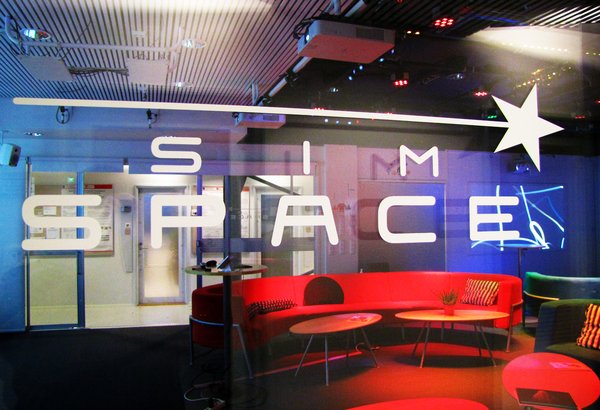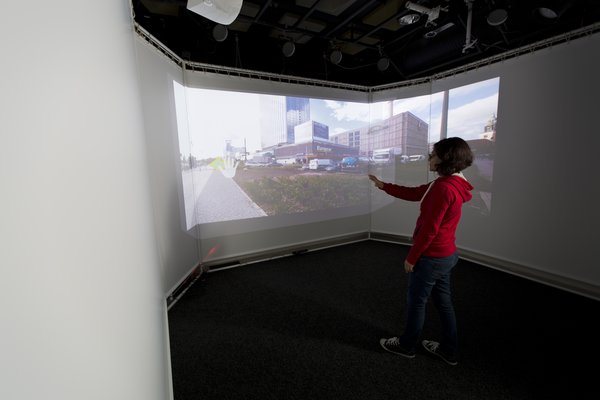SimSpace invites to interaction
10.2.2015
At first glance, you see colour lights, curved sofas and large screens on the walls. TAUCHI’s new SimSpace is, however, much more: it is an interactive smart space that opens up new horizons for teaching, research and product development.
The TAUCHI Research Center at the University of Tampere researches and develops the interaction between humans and technology in a multidisciplinary manner. Its goal is to match human abilities and possibilities of technology together as well as possible. The work may result, for example, in new kinds of gesture or speech controlled interfaces for both industrial and personal use.
At the beginning of 2015, the inauguration of smart space SimSpace was celebrated at TAUCHI. The new space implements in practice many of the things that TAUCHI targets in its research. The space is interactive; it observes with the help of cameras and microphones where people are and what they are doing. Under the surface, TAUCHI’s key competence is at work.
– The space truly observes the user’s actions. This has required a really fundamentally new way of modelling things, says Professor of Interactive Technology Markku Turunen.
– We at TAUCHI are familiar with technologies and the related modelling and we are able to combine presentation and control methods in new ways, continues Professor Roope Raisamo, Head of TAUCHI Research Center.

There are many ways of interaction in SimSpace. The user does not have to grab a mouse in order to get his/her point across, since the smart space recognises gestures and words and is able to react to them. It is easy to present information on the screens but it can also be done with sound or light.
Other ways of interaction are in the making, since, for example, utilising the sense of touch yields totally new possibilities for interaction between humans and technology. The current communication methods between humans and technology have usually been developed according to devices, be it a computer, tablet or mobile phone.
– When you interact directly with the space itself, you need more natural, diverse and rich methods that adjust to the actions of those present in the space. In smart spaces, people are also in social interaction with each other, unlike when personal devices are used, and that sets whole new kinds of challenges, says Turunen.

SimSpace has already made it to active use that is much more wide-ranging than initially thought possible. At the very beginning, SimSpace was going to be a place for utilising and presenting demonstrations and prototypes developed by TAUCHI for other locations. In addition to this, it became a space of joint development for research and product development projects. For example, companies have brought both the personnel and customers there.
– For example, a control room simulation can be created in the space for the needs of mechanical industry or plant process management, and the participants get to try out and develop the system with it, says Raisamo.
– In addition, we have accumulated a lot of know-how on how new technology solutions are developed together, continues Turunen.
Needless to say, innovation operations are interesting from TAUCHI’s perspective. Increasingly more companies are hoped to become SimSpace users to test their ideas in the smart space. According to Raisamo, SimSpace could serve, for example, in sessions of early stage design and prototype building – but because both the space and work methods are new and creating new, experimenting is sure to bring about also surprising new applications.
Translation: Lingoneer